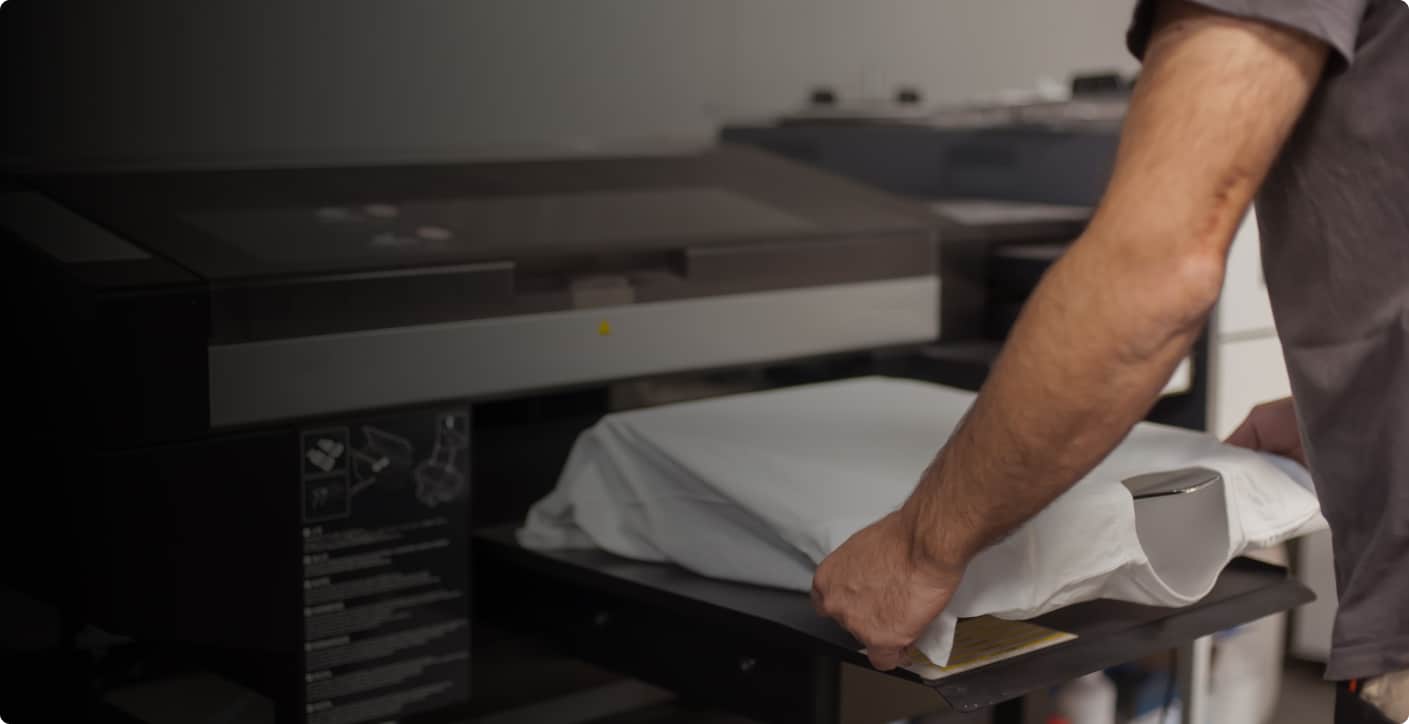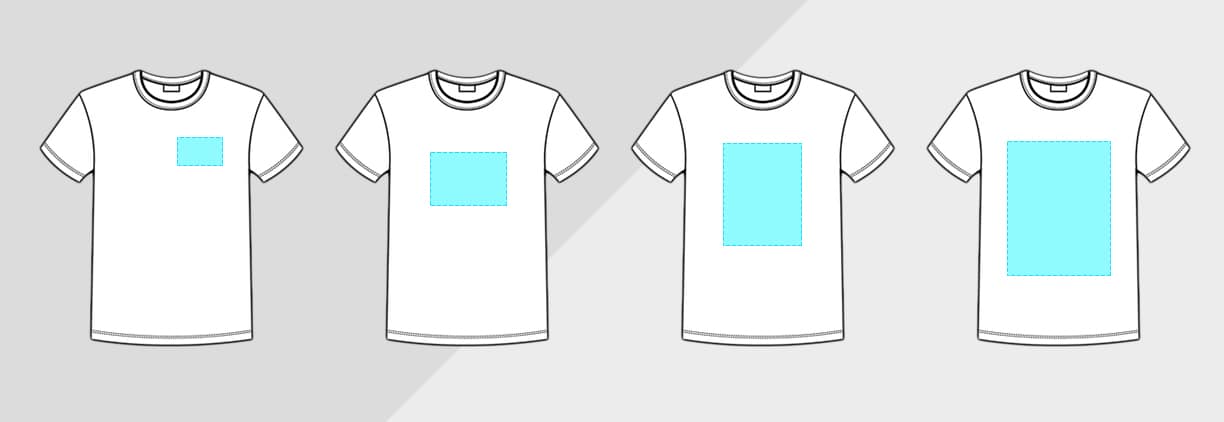Looking into designing your own T-Shirts but don’t know where to start? – don’t worry; we’ve got you covered.
By the end of this guide, you’ll be clued up on all the relevant terminology and all the different placement options you can use to put together your perfect design.
Print Design Terminology
- Print Dimensions
Print dimensions manage and determine the size of the shirt compared to the size of the overall design. There are many aspects of print dimensions, and each plays a vital role in the overall design of a t-shirt:
-
- Print Location
- Print Placement
- Print Size
- Print Area
- Size Dimensions
Size dimensions refer to the overall shape and sizing of the t-shirt you are printing your design on. Keeping the size dimensions of your t-shirt in mind is essential, as it’ll help you determine the best size and placement of your design. There are three main size dimension categories:
-
- Standard Size
- Oversize
- Maximum Size
- Anchor Point
The anchor point of your design helps you determine a fixed center point to plan your design around. For example, the anchor point of a t-shirt can be used as a measuring stick of sorts to assess logo size for shirts, whether you are going for a central and symmetrical design or a more sporadic design.
Determining clear anchor points will help you achieve consistency throughout your shirt templates across different sizes.
How To Print Images On Shirts
Price differences, look, production time and materials will all be factors when choosing the best method for printing a T-shirt. Let’s discuss these crucial characteristics using three widely used printing methods:
- Screen Printing
Screen printing t-shirts can be produced by hand or using professional equipment and machinery. In any case, this technique is the industry standard for printing T-shirts.
Your T-shirt design will be created as original screens by the printer, enabling you to print in large quantities.
- Vinyl Graphics
Transfer printing is used to manufacture t-shirts with vinyl graphics. This produces an appearance and texture distinct from screen printing and feels bolder and more three-dimensional. In many cases, vinyl is more resilient than standard ink.
- Direct-to-garment Printing
A more recent option that uses the flexibility of inkjet printing is direct-to-garment (or DTG) printing. Ink is sprayed onto the cloth, similar to inkjet printing on paper.
This process enables highly customizable designs with minute detail and various color options, perfect for printing with radiant color.
Top Print Placement Locations
Design Placement on Front of Shirt
- Center Chest – Another timeless spot, and you can find it right where you expect it to be: in the middle, on the chest. Even when someone is wearing a jacket, hoodie, or open button-down shirt, this medium-sized graphic is usually always fully visible. Generally, the size is more significant than a Left Chest but not quite as big as a Full Front.
- Left Chest – The traditional and preferred place to put your logo when making branded merchandise for employees, event staff, or anything else. The appropriate size usually is around 4 inches wide and falls about 3 inches below the collar. The placement may be altered to fit the shirt’s size, so it always looks good. Image detail is one of the compromises for this location. Avoid making intricate designs because people won’t be able to see them. So keep things as minimal as possible.
- Full Front – We have now reached the location for printing, which is probably the most popular. Most of the time, when someone says “front,” they mean Full Front. This size can look huge in some designs. Additionally, if you have screen printing done, you can wind up with a lot of ink on the shirt, which could lead to a dense print that isn’t permeable and is consequently referred to as a “sweat patch” for obvious reasons.
- Oversize Front – Oversize Front is even more significant than Full Front if you thought Full Front was enormous. It’s larger than what should probably be printed on a T-shirt, as the name implies. Anything larger than a Full Front in its regular size is considered an Oversize print.
Design Placement on Back of Shirt
- Small Upper Back – This placement is roughly one inch from the collar’s edge. Regarding upper back placement, make sure to keep the design straightforward because the typical size is smaller than a Left Chest, typically 2″ to 3″ wide. Given that this is one of the smallest placement types, your design should be simple and lacking in unnecessary elements. Although it doesn’t have to, remember that most people will see it up close, such as while standing in line or seated next to the wearer.
- Upper Back – Similar to the front chest region, the upper back is a versatile and medium-sized placement spot. Less than 4″ below the collar, this location prioritizes the width of the back for complete visibility and covers the area around the shoulder blades. On this placement site, more typographic designs might be visible. Promotion of businesses, events, or a particular cause is frequent use.
- Full Back – The Full Back is the most well-liked print area after the Full Front. It is a classic. However, it is typically larger and printed slightly lower than other back print locations. The standard print size of 12″ wide by 14″ high is typically more than adequate, but if necessary and the garments aren’t too small, we can go up to 14.5″ wide by 16.5″ high.
Sleeve Logo Placement
Although you might not always find it an option from print providers, the sleeve placement location offers additional design benefits. You should limit this area to simpler graphics or logos because it is a smaller space. The standard is around 3” wide, but we can go as big as 4.5” wide or as small as 1” wide. In addition, you may have noticed that business sponsors favor it over other options.
It’s crucial to note that these placement places are recommendations only; you are under no need to follow them. Although the positioning of a design might vary greatly, ready-made mockups and large-scale print suppliers are likely to utilize these guidelines.
Table of Contents
table
Recent Blogs

A Guide to Onboarding New Employees

The Best Ideas for Work Anniversary Gifts

Let’s Socialize
Never Miss a Thing
Subscribe to our newsletter and stay updated to our offers and deals!


